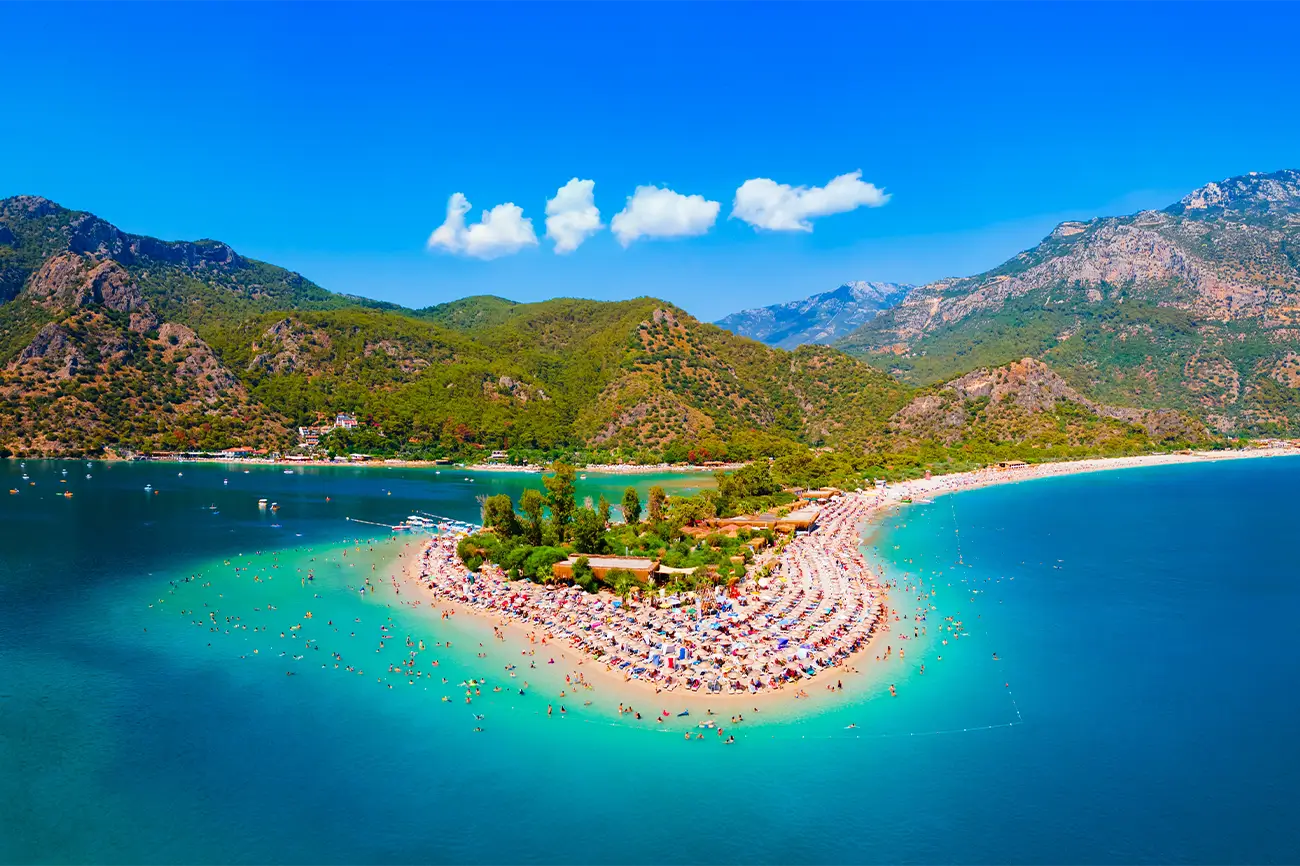
10 Nov. FETHİYE
Fethiye ist ein wichtiges Siedlungszentrum, das in der Antike von den Lykiern „Telmessos“ genannt wurde. Telmessos geriet 545 v. Chr. unter die Herrschaft der Perser und wurde 333 v. Chr. von Alexander dem Großen eingenommen. Nach dem Tod Alexanders des Großen blieb die Stadt unter der Herrschaft des ägyptischen Königs Ptolemaios und ging dann in die Hoheit des Römischen Reiches über. In Quellen aus dem 13. und 14. Jahrhundert wird die Stadt als „Makri“ (Meğri) bezeichnet.
Nach der Teilung des Römischen Reiches in zwei Teile wurde Fethiye Teil des Byzantinischen Reiches. Die Region wurde 1261 von Salpakis Mantakhias, bekannt als Herr Menteşe, dem Gründer des Fürstentums Menteşâ, von den Byzantinern übernommen und kam 1424 unter die Kontrolle des Osmanischen Reiches.
Die Stadt, die während der osmanischen Zeit als „Meğri“ bekannt war, wurde 1914 in Erinnerung an Herr Fethi, einen der ersten türkischen Piloten und unseren ersten Märtyrer der Lüfte, in „Fethiye“ umbenannt.
WICHTIGE HISTORISCHE UND ARCHÄOLOGISCHE DESTINATIONEN
Cadianda
Cadianda ist 24 km von Fethiye entfernt, in der Nähe des Stadtteils Üzümlü gelegen, war im Laufe der Geschichte eine wichtige Siedlung. Bei den vom Archäologischen Museum Fethiye durchgeführten Ausgrabungen wurden die wichtigsten Ruinen der Stadt, wie der Sportkomplex, das Theater, das Mausoleum und die Agora, ausgegraben. Diese Strukturen liefern wertvolle Informationen über die antike Architektur und die soziale Struktur von Cadianda.
Telmessos Antike Stadt
Lykien war in der Antike als „Land der Lichter“ bekannt und liegt auf der Halbinsel Teke zwischen Fethiye und Antalya. Bekannt für ihre einzigartige Sprache, ihre matriarchalische Lebensweise, ihre Felsenmonumente und Gräber, haben die Lykier mit ihrer Vorliebe für Freiheit und Unabhängigkeit einen wichtigen Platz in der Geschichte. Telmessos ist der antike Name dieser Region in Fethiye und wurde nach Telmessos, dem Sohn des Gottes Apollo, benannt.
Telmessos, das ab dem 5. Jahrhundert v. Chr. unter persische, römische und byzantinische Herrschaft kam, konnte dabei seine ursprüngliche Struktur bewahren. Eines der beeindruckendsten Artefakte, die bis heute erhalten geblieben sind, ist das Felsengrab, das für Amintas, den Sohn des Hermapios, im 4. Jahrhundert v. Chr. Dieses Grabmal fällt durch seine Architektur auf, die an einen Tempel in ionischer (Ion) Ordnung erinnert. Es gibt sarkophagartige Gräber und ein antikes Theater, die zu den herausragenden Beispielen der lykischen Kunst und Steinbearbeitung zählen.
Vor allem der Garten des Regierungsgebäudes, die Nekropole und die Beispiele gegenüber der Hafenmole zeugen von diesem historischen Erbe.
Kayaköy
Kayaköy ist auf den Ruinen der Stadt Karmylassos aus dem Jahr 3000 v. Chr. erbaut und besteht aus zwei verschiedenen Siedlungen. Die erste davon ist Levisse, die aufgrund des Bevölkerungsaustauschs im Jahr 1922 leer und verfallen war. Heute gilt Levisse als lebendiges Freilichtmuseum und stößt bei Touristen auf großes Interesse.
Das zweite ist das Dorf Kayı, das in den osmanischen Vermessungsbüchern ab 1512 aufgeführt ist. Jahrhundert von Kayı und Karakeçili Yoruks bewohnt wurde, war diese Region viele Jahre lang ein Lebensraum für Türken und Griechen. Während die Griechen in den Häusern des Dorfes wohnten, lebten die Türken in den umliegenden Feldern.
Zu den Sehenswürdigkeiten von Kayaköy gehören die Oberkirche (Taksiyarhis-Kirche), die Unterkirche (Panaghia Pirgiotissa), vierzehn Kapellen, Töpfereien und der Turabi-Brunnen. Kayaköy bietet seinen Besuchern mit seinem historischen und kulturellen Reichtum ein unvergessliches Erlebnis.
DAS NATÜRLICHE UND KULTURELLE ERBE
Göcek Inseln
Sovalye Insel
Gemiler Insel
Babadag – (Baba Berg)
Likya-Weg
Afkule-Kloster
WICHTIGE BUCHTEN UND STRÄNDE
Calis Strand
Der Calis Strand ist nur 5 km vom Zentrum von Fethiye entfernt. Der Strand ist eines der wichtigsten Unterkunfts- und Unterhaltungszentren der Region. Gegenüber liegt die Ritterinsel (Sovalye-Insel), die das Eingangstor zum Hafen von Fethiye ist. Der Calis-Strand ist mit öffentlichen Verkehrsmitteln und kleinen Booten vom Meer aus leicht erreichbar. Außerdem ist dieser Strand einer der wichtigsten Nistplätze der Caretta-caretta-Schildkröten und umfasst das Calis-Naturpark-Vogelschutzgebiet, das 219 Vogelarten beherbergt.
Olüdeniz
Oludeniz wird in der Tourismusliteratur als "das Paradies, das Gott der Welt geschenkt hat" bezeichnet und ist ein weltbekanntes Tourismuszentrum. Es ist mit Pinienwäldern umgeben, ein Naturwunder mit seinem warmen Meer und kilometerlangen Sandstränden. Oludeniz besteht aus zwei Teilen: Der erste ist der Belceğiz-Strand, der sich von der Bucht bis zur Lagune erstreckt und gewellt ist. Der zweite ist der ruhige und flache echte Oludeniz, der in der Lagune liegt. Außerdem ist Oludeniz einer der idealsten Orte der Welt für Gleitschirmflieger.
Schmetterlingstal - (Kelebekler Vadisi)
Das Schmetterlingstal, eine der schönsten Buchten von Fethiye, befindet sich auf einer Fläche von zehn Hektar in einer steilen Talsohle am Fuße des Babadağ (Baba-Berg), einem der 100 Berge, die aufgrund ihrer endemischen Arten zum Weltkulturerbe erklärt werden sollen. In diesem für seine Schmetterlingsvielfalt berühmten Mittelmeertal kann man ab dem Frühjahr neun bis zehn Monate lang 30 Tag- und 40 Nachtschmetterlingsarten beobachten.
Der berühmteste ist der Tigerfalter. Das Schmetterlingstal kann in einer halben Stunde mit einem Shuttle-Boot von Ölüdeniz aus erreicht werden. Im Jahr 1995 wurde das Tal zum Naturschutzgebiet ersten Grades erklärt, und es gibt keine Unterkunftsmöglichkeiten, da keine Bauarbeiten erlaubt sind. Sie können in Zelten, Schlafsäcken oder Holzpavillons übernachten.
EMPFEHLENSWERTE AKTIVITÄTEN
Internationales Fethiye Sportfestival (Herbst)
Internationales Fethiye Kultur- und Kunstfestival
Internationales Fethiye Ölüdeniz Luftspiele Festival
HAUPTMARINA UND HÄFEN
In Fethiye gibt es 8 private und 2 öffentliche Marinas und Häfen.

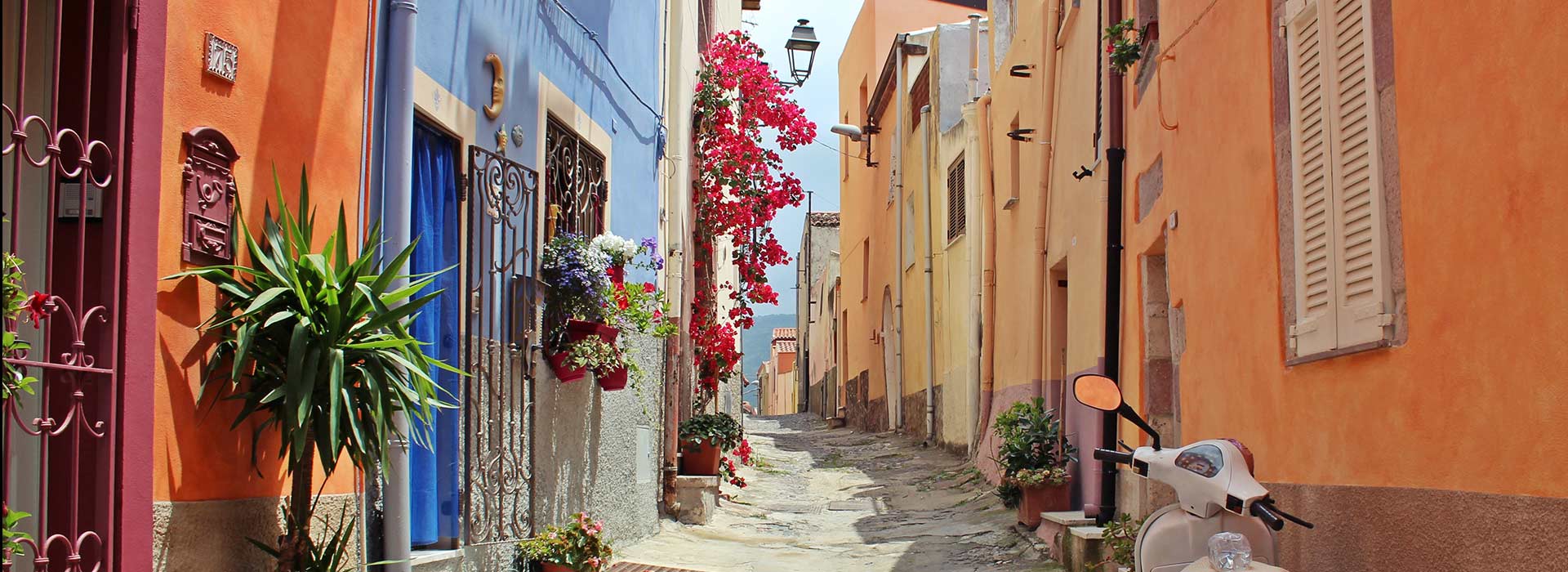
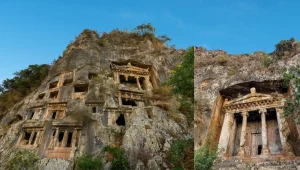
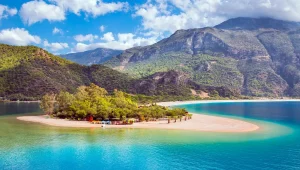
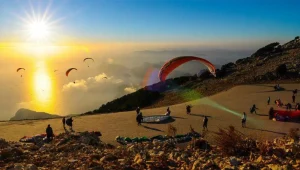
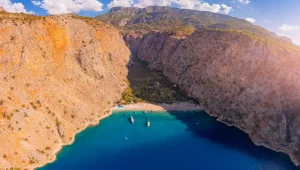
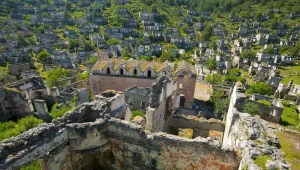
Sorry, the comment form is closed at this time.